On Monday, November 10, around ten thousand public service workers demonstrated in Berlin to protest against the policies of the city’s Social Democratic Party-Left Party Senate administration. The protesting workers included teachers, nursery school personnel, employees of the Senate administration and Berlin public institutions. 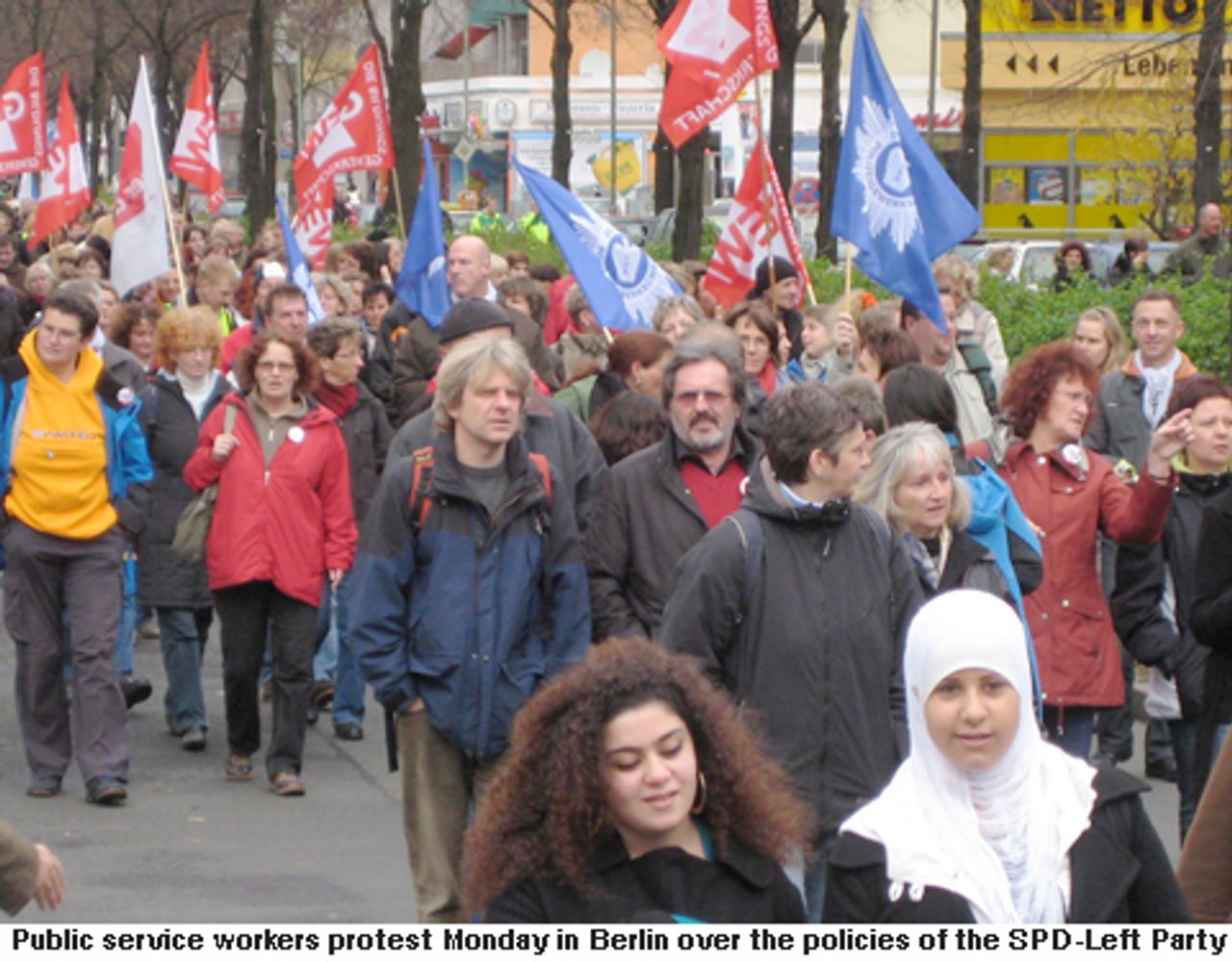
Demonstrators, who marched from the city centre to the headquarters of the SPD—the Willy Brandt House—denounced years of stagnant wages, growing workloads and the miserable state of Berlin’s educational sector. The demonstration was the prelude to an eight-day strike called by the trade unions, including Verdi (public services), the GEW (teachers) and IGBau (construction workers).
The unions are demanding a 2.9 percent wage increase supplemented by three single payments of €300. Bearing in mind that public services workers in Berlin have been denied any wage increase for the past four years, the union’s demand amounts to a paltry 0.7 percent per year. Against a background of mounting inflation—especially for food and energy—the demand represents a substantial cut in real wages. Nevertheless, the Senate immediately rejected the demand and is offering just two single payments of €300.
Demonstrators were furious with the Senate’s reaction. “An increase in wages is also 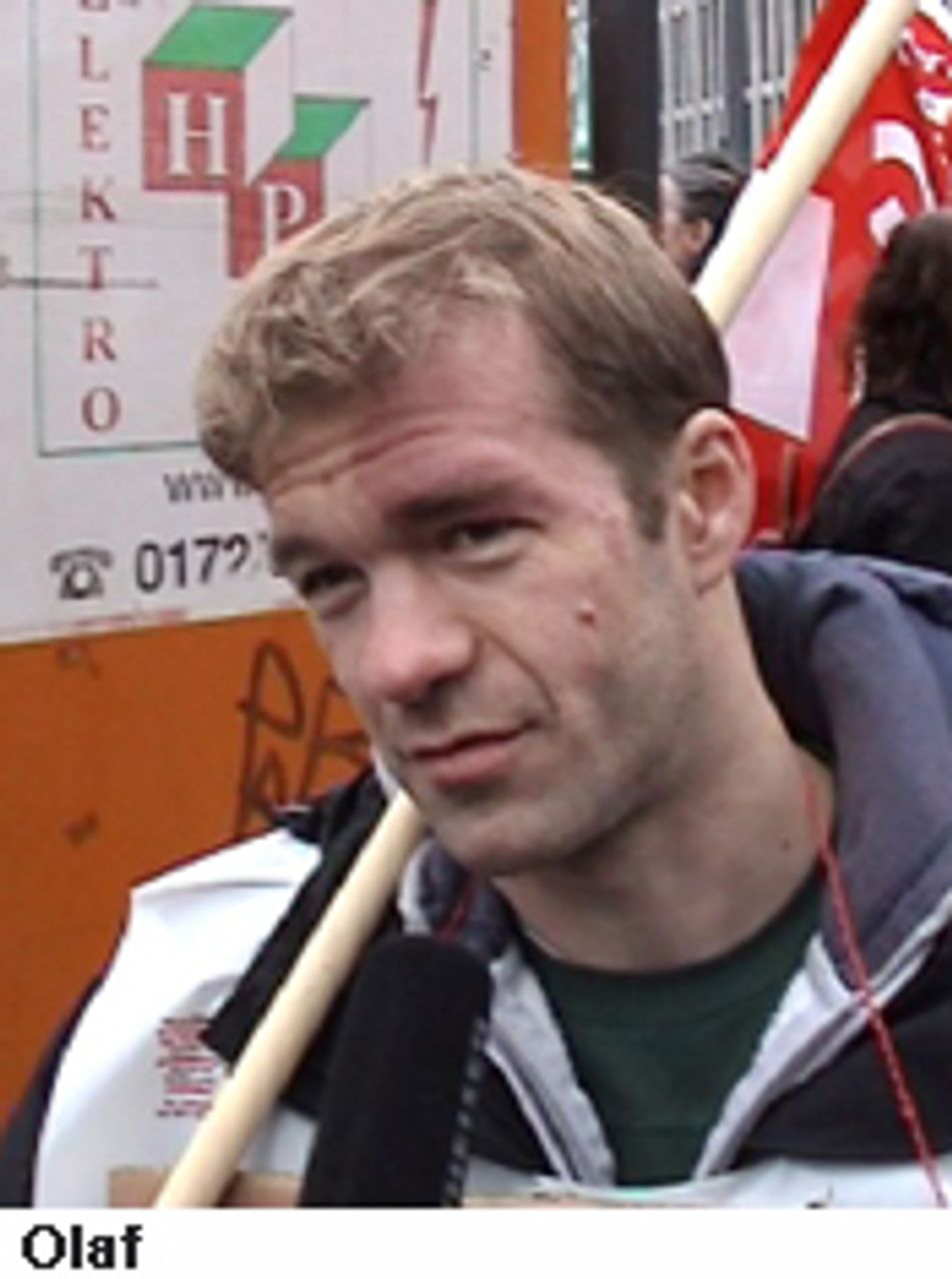 recognition that one is taken seriously and one’s work is appreciated,” declared Olaf, a young teacher from Berlin. He told our reporters that for years he had been employed on a temporary only basis and was regularly made redundant over the summer holidays. “I had the workload of a head instructor, but in summer holidays was forced to go to the labour exchange and apply for unemployment pay,” he said, adding that his workload increased incessantly.
recognition that one is taken seriously and one’s work is appreciated,” declared Olaf, a young teacher from Berlin. He told our reporters that for years he had been employed on a temporary only basis and was regularly made redundant over the summer holidays. “I had the workload of a head instructor, but in summer holidays was forced to go to the labour exchange and apply for unemployment pay,” he said, adding that his workload increased incessantly.
These concerns were echoed by Sylvia Weber who has worked at a special vocational school for 16 years. Teaching conditions have worsened continuously since the SPD and Left Party took power in Berlin, she reported. Formerly she had charge of 20 pupils, but this figure has risen to 24 or 25. Mrs. Ryschitzke reported that teachers even brought pieces of furniture to their primary school because no money was available for such purchases. Another teacher was indignant over the fact that huge sums of money had been paid out to rescue the big banks while nothing was available for the requirements of children. She carried a banner with the slogan, “Who is investing in the bank of education?” “I work for the state,” she said “and have never had as little money as now in my life.”
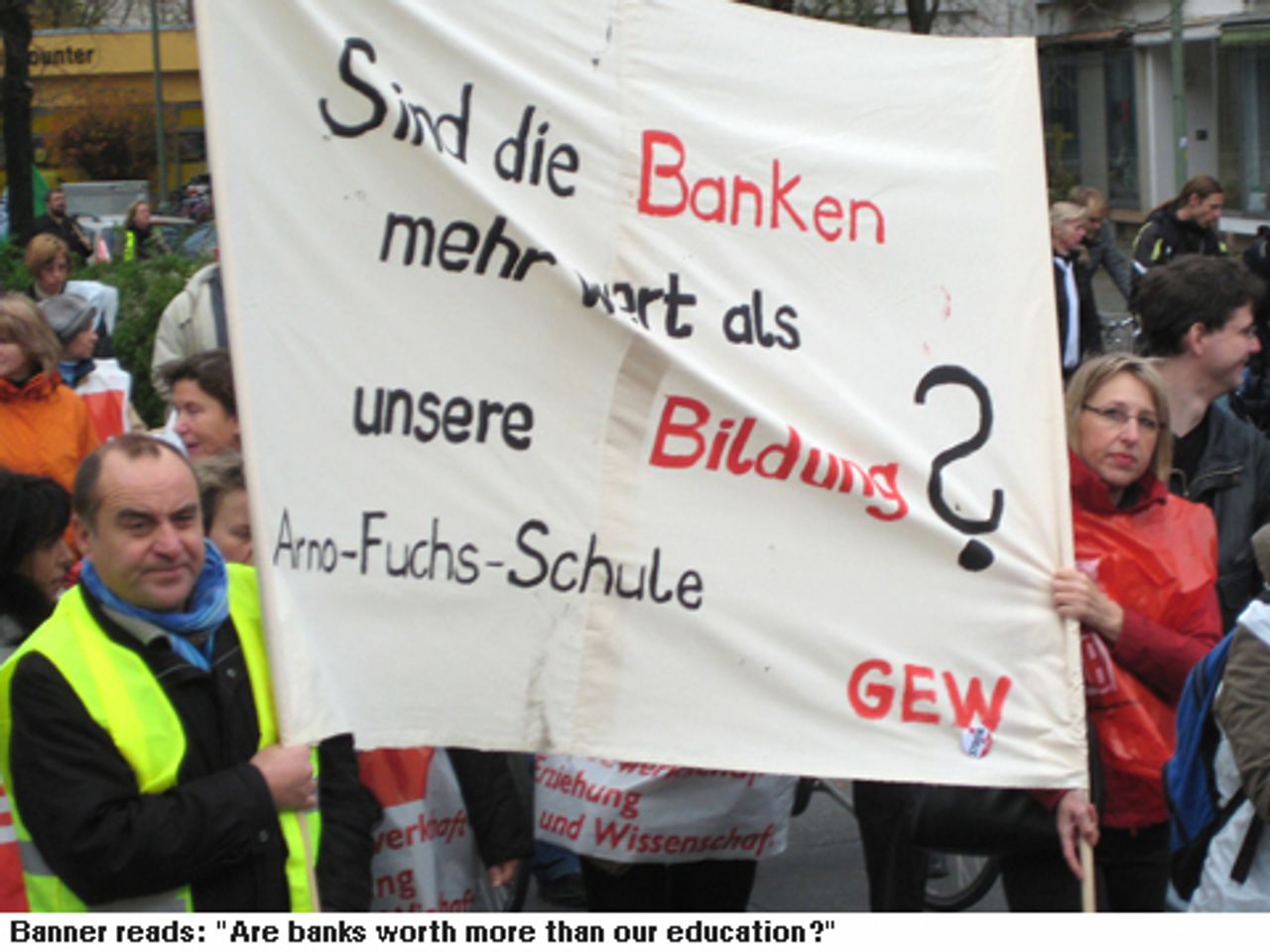 While demonstrators expressed their determination to fight, the trade union organizers of the protest were busy preparing a betrayal of the struggle. With more effort the unions could have organised a much bigger gathering, and it was no accident that the short route for the demonstration ended directly at the Willy Brandt house. Instead of mobilising popular opposition against the SPD-Left Party Senate, the trade union bureaucrats promoted illusions in the right-wing SPD leadership headed by party chairman Franz Müntefehring.
While demonstrators expressed their determination to fight, the trade union organizers of the protest were busy preparing a betrayal of the struggle. With more effort the unions could have organised a much bigger gathering, and it was no accident that the short route for the demonstration ended directly at the Willy Brandt house. Instead of mobilising popular opposition against the SPD-Left Party Senate, the trade union bureaucrats promoted illusions in the right-wing SPD leadership headed by party chairman Franz Müntefehring.
The chairman of the GEW Berlin, Rosemarie Seggelke, declared, “We hope that when the city mayor Klaus Wowereit (SPD) sits down here with his fellow party members then they will read him the riot act and say to him, ‘Klaus Wowereit, do not do any further damage to the reputation of the Social Democratic Party. Come down from your high horse and show that you are not the most worker-hostile head of government in the whole country. Make a step towards the employees, negotiate with them about their entitled demands. Then we can accept you again.’”
In fact, collaboration between the trade unions, the SPD and the Left Party has a long and pernicious history in Berlin, and most of the participants on the demonstration were quite conscious of it. Following its withdrawal from the local employers’ federation, the Berlin Senate struck a so-called “solidarity pact” with Verdi in 2003. The pact resulted in an average ten percent pay cut for city employees up to March, 2010. At the same time, the Senate slashed more than 15,000 public service jobs and forced remaining workers to pick up additional workloads. Union officials have sought to justify the miniscule wage demands during the present negotiations by pointing to limitations in the contract they accepted in 2003. According to trade union officials, it is not possible to call for pay increases which would result in employees receiving higher payments than workers in other states.
The demand for three additional single payments was first raised in the spring of 2007. Since then the trade unions have organised a series of utterly toothless protests, which have failed to challenge the Senate in any serious manner.
In April, 2008 the trade unions felt obliged to react to the militancy of their membership by contemplating strikes. A subsequent ballot of union members resulted in an 85.4 percent majority for strike action. The response of Verdi to the Senate’s refusal to negotiate has been to organise one-day strikes by individual groups of workers isolated from the mass of workers.
The arrogance and stubbornness of the SPD-Left Party Senate is a product of the close partnership between Verdi and the political parties represented in the Senate. This political alliance against the working class was demonstrated with the cuts imposed in 2003, with the betrayal of the Berlin transport workers strike last spring and in the current struggle by state employees. The only reason the unions have gone so far as to call strike action is because they fear losing all control over their members.
A young school teacher from the Berlin district of Spandau told the WSWS that she had to fight long and hard at a teachers’ meeting for a joint day of action day with other 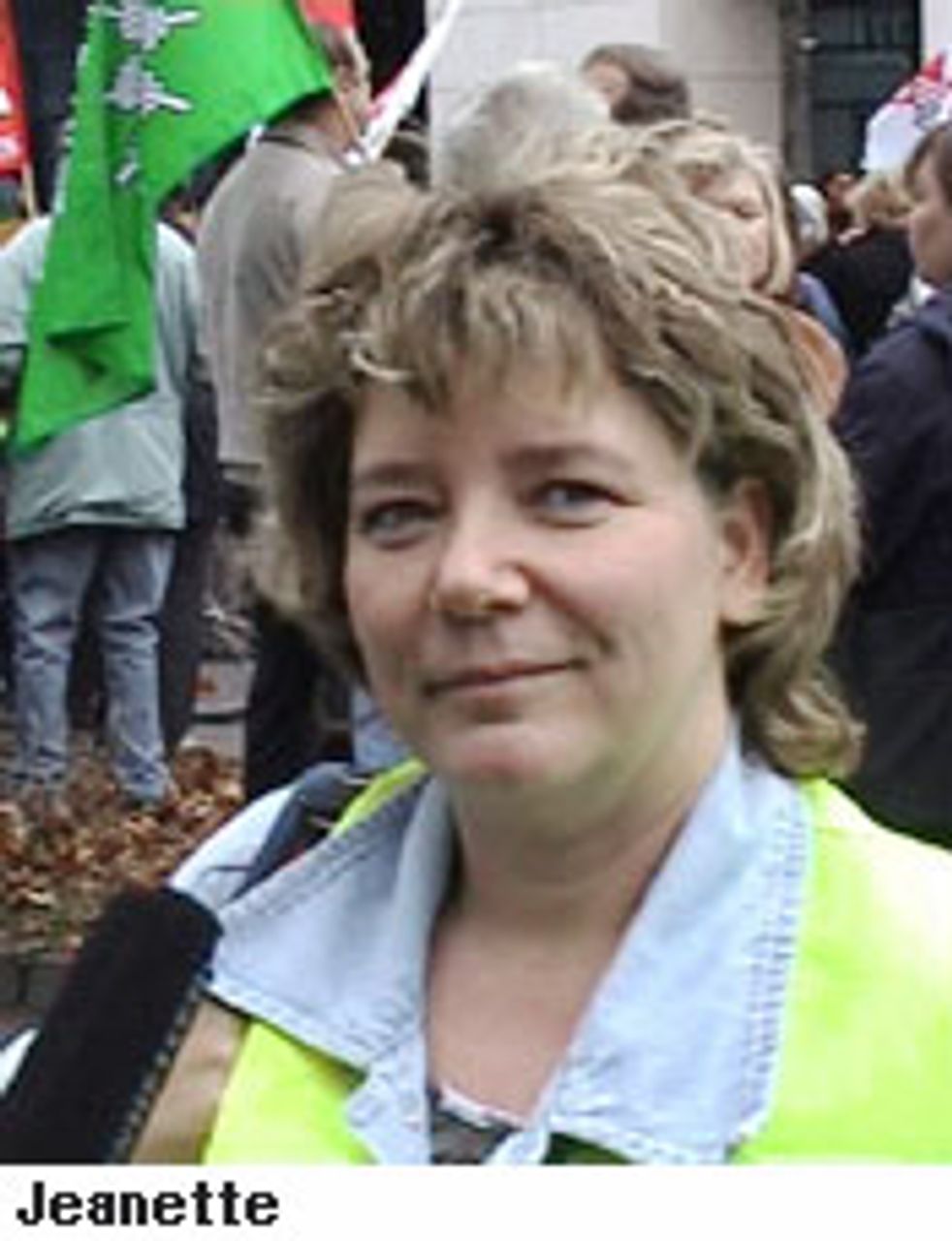 public service workers. “The GEW only wanted to strike one day long.”
public service workers. “The GEW only wanted to strike one day long.”
The nursery teacher, Jeanette, was dismissive of Verdi’s strike tactic, which ensures essential services in the city’s nurseries. Almost all parents were in favour of a full strike, she reported. “All that was needed was a proper general strike—three days, and then all of Berlin would be shut down,” she said. “Just call together all of those demanding higher wages or who are dissatisfied with the situation as it is, then Berlin would come to a full stop.”
Occupational teacher Tanja said the demands raised by the trade unions were much too low. “The discussions about wage adjustment by the trade unions were always set too low. Instead of telling the Senate, we are determined to see out the dispute to the end.” There is a great deal of frustration with the trade unions. “Many colleagues say we only lose out on wages and do not achieve anything anyway.”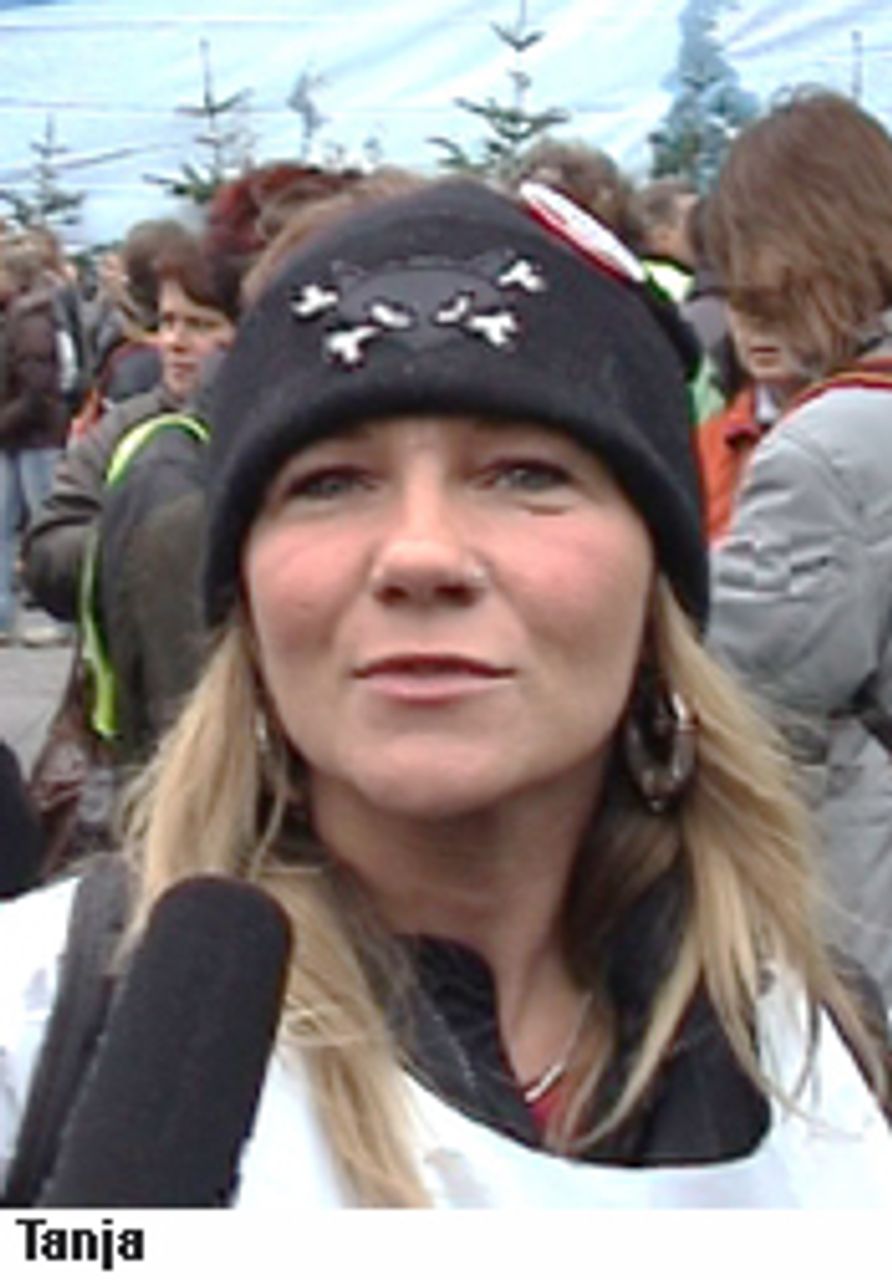
Confronted with such statements by ordinary members, the strike leader and local Verdi chief, Werner Roepke, reacted by laying the blame on public sector employees. There is not enough militancy, he complained, and then sought to claim that the previous contract agreed by the union had been aimed at ensuring that workers in Berlin should earn as much [in fact, as little] as their colleagues in other states. The ten percent wage cut was bound up with a reduction of the work burden, he claimed. When it was pointed out to him that this claim had been denied by all those on the demonsration who had spoken with the WSWS, Roepke retreated somewhat and cynically maintained, “I said working times have been cut—not that less work is being carried out.”
The deputy head of Verdi, Astrid Westhope, took up the same theme when she sought to argue that the increase in workloads was a “sham organised by the Senate.” In fact, this “sham” originated from the offices of Verdi and was signed and sealed by the trade union in 2003.
Subscribe to the IWA-RFC Newsletter
Get email updates on workers’ struggles and a global perspective from the International Workers Alliance of Rank-and-File Committees.
